-
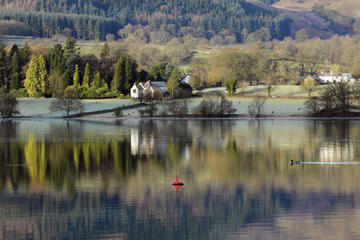 Ullswater Lake
Ullswater Lake Located in the northern half of Lake District National Park, Ullswater Lake is the second-largest lake in the area and is consistently cited as one of the most beautiful English lakes. Often compared to Lake Lucerne in Switzerland, it is 9 miles (14.5 kilometers) long, 0.75 miles (1
Ullswater Lake
Ullswater Lake Located in the northern half of Lake District National Park, Ullswater Lake is the second-largest lake in the area and is consistently cited as one of the most beautiful English lakes. Often compared to Lake Lucerne in Switzerland, it is 9 miles (14.5 kilometers) long, 0.75 miles (1
-
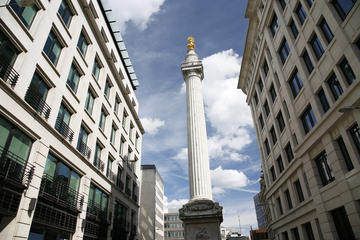 Monument to the Great Fire of London
Monument to the Great Fire of London The Monument to the Great Fire of London, often simply known as ‘The Monument,’ is a Doric Greek column built to commemorate the Great Fire of London. The monument, designed by Sir Christopher Wren and built between 1671 and 1677, is located near the northern e
Monument to the Great Fire of London
Monument to the Great Fire of London The Monument to the Great Fire of London, often simply known as ‘The Monument,’ is a Doric Greek column built to commemorate the Great Fire of London. The monument, designed by Sir Christopher Wren and built between 1671 and 1677, is located near the northern e
-
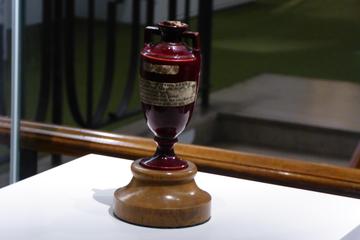 MCC Cricket Museum
MCC Cricket Museum Located on Lord’s Cricket Ground, the MCC Cricket Museum is one of the oldest sporting museums in the world. Opened by the Duke of Edinburgh in 1953, the collection actually dates back to 1864, spanning the entire history of the sport of cricket. Items on display include the cri
MCC Cricket Museum
MCC Cricket Museum Located on Lord’s Cricket Ground, the MCC Cricket Museum is one of the oldest sporting museums in the world. Opened by the Duke of Edinburgh in 1953, the collection actually dates back to 1864, spanning the entire history of the sport of cricket. Items on display include the cri
-
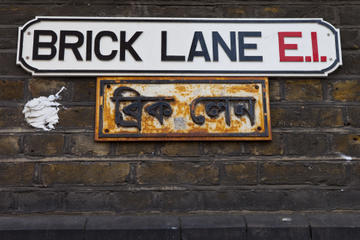 East End
East End Renowned throughout Victorian times as the home of the working class, the birthplace of Cockney Rhyming Slang and the stomping ground of the notorious Jack the Ripper, London’s East End has long been associated with the grittier side of the capital. But despite its rough-around-the-edges
East End
East End Renowned throughout Victorian times as the home of the working class, the birthplace of Cockney Rhyming Slang and the stomping ground of the notorious Jack the Ripper, London’s East End has long been associated with the grittier side of the capital. But despite its rough-around-the-edges
-
 York Maze
York Maze With over 1.5 million maize plants stretching over an area the size of 15 Wembley football pitches, the York Maize Maze is one of the world’s biggest living mazes, replanted to a new design each year. The maze opens throughout the summer holidays, as well as hosting a special Halloween f
York Maze
York Maze With over 1.5 million maize plants stretching over an area the size of 15 Wembley football pitches, the York Maize Maze is one of the world’s biggest living mazes, replanted to a new design each year. The maze opens throughout the summer holidays, as well as hosting a special Halloween f
-
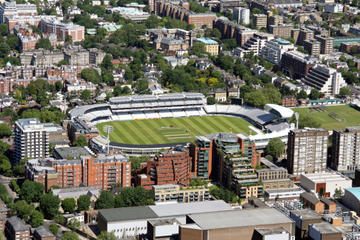 Lords Cricket Ground
Lords Cricket Ground Lord’s Cricket Ground is often described as the sport’s spiritual headquarters, hosting national competitions and international test matches. Although legendary, the stadium doesn’t have any royal relations as its name may suggest — it’s named after Thomas Lord, a professional
Lords Cricket Ground
Lords Cricket Ground Lord’s Cricket Ground is often described as the sport’s spiritual headquarters, hosting national competitions and international test matches. Although legendary, the stadium doesn’t have any royal relations as its name may suggest — it’s named after Thomas Lord, a professional
-
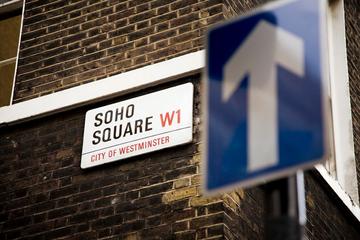 Soho
Soho Soho is one of Londons most famous areas. Bounded by Charing Cross Road, Oxford Street, Regent Street and Shaftesbury Avenue, its a close-knit tangle of busy streets with some of Londons best cafes (Bar Italia), music venues (Ronnie Scotts), pubs (the French House), shops, nightclubs and hist
Soho
Soho Soho is one of Londons most famous areas. Bounded by Charing Cross Road, Oxford Street, Regent Street and Shaftesbury Avenue, its a close-knit tangle of busy streets with some of Londons best cafes (Bar Italia), music venues (Ronnie Scotts), pubs (the French House), shops, nightclubs and hist
-
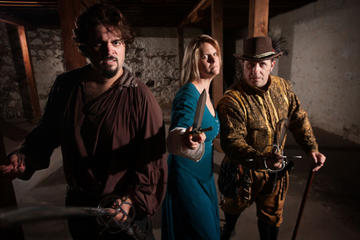 The York Dungeon
The York Dungeon Whisking visitors on a hair-raising journey through York’s grim and gruesome past, the York Dungeon is one of the city’s most entertaining attractions, located close to the landmark Clifford’s Tower. Spanning over 2,000 years of York’s history, the city’s most notorious ghosts and
The York Dungeon
The York Dungeon Whisking visitors on a hair-raising journey through York’s grim and gruesome past, the York Dungeon is one of the city’s most entertaining attractions, located close to the landmark Clifford’s Tower. Spanning over 2,000 years of York’s history, the city’s most notorious ghosts and
-
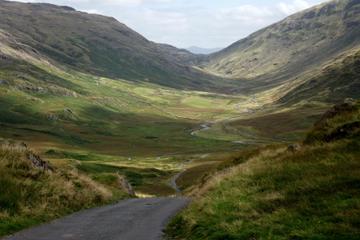 Wrynose Pass
Wrynose Pass The Lake District is famous for its dramatic high mountain passes, and few are steeper or more winding than the notorious Wrynose Pass, often described, along with the adjourning Hardknott pass, as one of Britain’s most difficult roads. Climbing around 281 meters in just over 3 km, th
Wrynose Pass
Wrynose Pass The Lake District is famous for its dramatic high mountain passes, and few are steeper or more winding than the notorious Wrynose Pass, often described, along with the adjourning Hardknott pass, as one of Britain’s most difficult roads. Climbing around 281 meters in just over 3 km, th
-
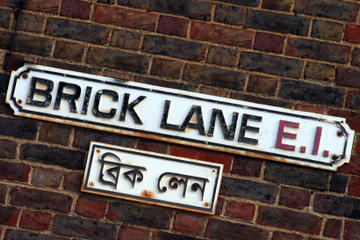 Brick Lane
Brick Lane So infamous is the East London Street of Brick Lane that there was even an award winning novel and movie penned with the same name. The street, running from Bethnal Green to Whitechapel via the equally famous Spitalfields, has a rich multicultural history, first as home to a sizable Jew
Brick Lane
Brick Lane So infamous is the East London Street of Brick Lane that there was even an award winning novel and movie penned with the same name. The street, running from Bethnal Green to Whitechapel via the equally famous Spitalfields, has a rich multicultural history, first as home to a sizable Jew
-
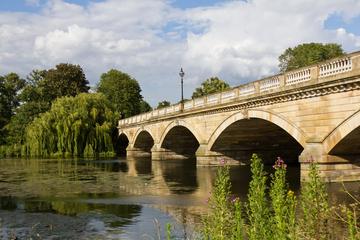 Hyde Park
Hyde Park London is full of huge parks which the locals refer to as the lungs of the city. Hyde Park is one of the biggest and best known. Another of Henry VIIIs hunting grounds, it is now a place of concerts, art and horse-riding. The famous Peter Pan sculpture is in the park, as is the Princess
Hyde Park
Hyde Park London is full of huge parks which the locals refer to as the lungs of the city. Hyde Park is one of the biggest and best known. Another of Henry VIIIs hunting grounds, it is now a place of concerts, art and horse-riding. The famous Peter Pan sculpture is in the park, as is the Princess
-
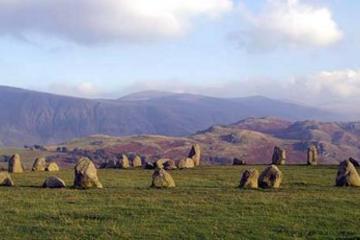 Castlerigg Stone Circle
Castlerigg Stone Circle There are numerous neolithic stone circles in the Lake District and nearby areas, the most popular being at Castlerigg. This more-or-less round grouping of 38 boulders, with a rectangle of 10 more joining the inner edge of the circle, dates back some 5000 years, making it e
Castlerigg Stone Circle
Castlerigg Stone Circle There are numerous neolithic stone circles in the Lake District and nearby areas, the most popular being at Castlerigg. This more-or-less round grouping of 38 boulders, with a rectangle of 10 more joining the inner edge of the circle, dates back some 5000 years, making it e
-
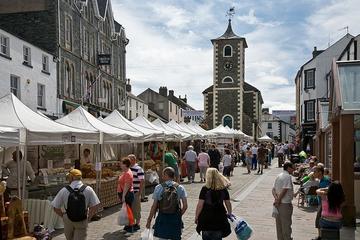 Keswick
Keswick Keswick (pronounced “Kezick”), situated at the uppermost tip of Derwentwater, is the hub of the northern part of the Lake District. There are a few local points of interest, but attractions like the Pencil Museum are unlikely to detain you long and this market town functions best as a poin
Keswick
Keswick Keswick (pronounced “Kezick”), situated at the uppermost tip of Derwentwater, is the hub of the northern part of the Lake District. There are a few local points of interest, but attractions like the Pencil Museum are unlikely to detain you long and this market town functions best as a poin
-
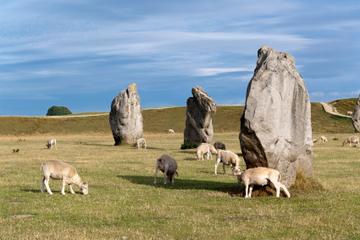 Avebury
Avebury Some places just have a special feeling and Avebury is one of them. A Neolithic site of three stone circles dating from 2600 BC, Avebury has the largest stone circle in Europe.Avebury is a henge, which means a bank or ditch with stone circles within this ring. No-one knows exactly who buil
Avebury
Avebury Some places just have a special feeling and Avebury is one of them. A Neolithic site of three stone circles dating from 2600 BC, Avebury has the largest stone circle in Europe.Avebury is a henge, which means a bank or ditch with stone circles within this ring. No-one knows exactly who buil
-
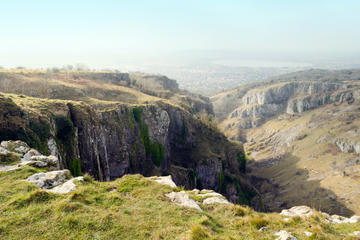 Cheddar Gorge
Cheddar Gorge With its dramatically jagged cliffs towering 450 feet over lush green valleys and limestone rock face pocked with caves, the Cheddar Gorge is not only England’s largest gorge, but one of the country’s most impressive natural wonders. Formed during the last ice age and cocooning the n
Cheddar Gorge
Cheddar Gorge With its dramatically jagged cliffs towering 450 feet over lush green valleys and limestone rock face pocked with caves, the Cheddar Gorge is not only England’s largest gorge, but one of the country’s most impressive natural wonders. Formed during the last ice age and cocooning the n
-
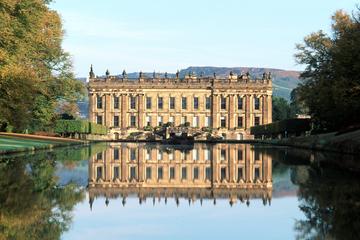 Chatsworth House
Chatsworth House Set within a 105-acre estate, the magnificent Tudor mansion of Chatsworth House dates back to the 1560s, and remains the seat of the Duke and Duchess of Devonshire to this day. The regal country estate is now one of England’s most popular stately homes and hosts an array of events
Chatsworth House
Chatsworth House Set within a 105-acre estate, the magnificent Tudor mansion of Chatsworth House dates back to the 1560s, and remains the seat of the Duke and Duchess of Devonshire to this day. The regal country estate is now one of England’s most popular stately homes and hosts an array of events
-
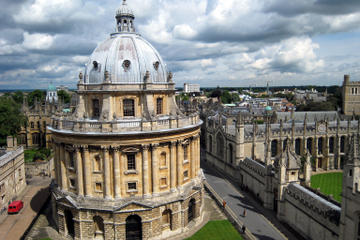 Radcliffe Camera
Radcliffe Camera With its striking neoclassical dome looming over the neighboring Bodleian Library, the Radcliffe Camera (or Radcliffe Room in Latin) is one of Oxford’s most iconic sights and one of the most photographed of all the university buildings. Funded by Royal physician John Radcliffe and
Radcliffe Camera
Radcliffe Camera With its striking neoclassical dome looming over the neighboring Bodleian Library, the Radcliffe Camera (or Radcliffe Room in Latin) is one of Oxford’s most iconic sights and one of the most photographed of all the university buildings. Funded by Royal physician John Radcliffe and
-
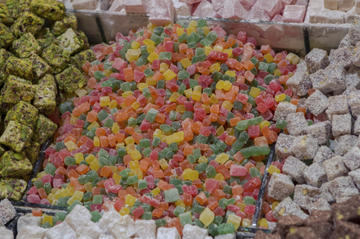 Oxford Covered Market
Oxford Covered Market Whether you’re meeting friends for coffee or bartering over artisan produce, wandering around Oxford’s bustling central market serves as a lively introduction to the city. Drawing a steady stream of both locals and tourists, the Oxford Covered Market has been at the center of
Oxford Covered Market
Oxford Covered Market Whether you’re meeting friends for coffee or bartering over artisan produce, wandering around Oxford’s bustling central market serves as a lively introduction to the city. Drawing a steady stream of both locals and tourists, the Oxford Covered Market has been at the center of
-
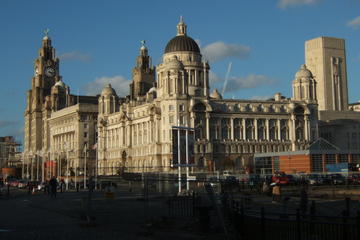 Liverpool
Liverpool Liverpool’s proud maritime heritage is reflected in its numerous preserved dock buildings which together constitute a UNESCO World Heritage site. Many of these buildings have been imaginatively repurposed, such as the Albert Dock complex which houses Tate Liverpool, one of the UK’s major
Liverpool
Liverpool Liverpool’s proud maritime heritage is reflected in its numerous preserved dock buildings which together constitute a UNESCO World Heritage site. Many of these buildings have been imaginatively repurposed, such as the Albert Dock complex which houses Tate Liverpool, one of the UK’s major
-
 Hadrians Wall
Hadrians Wall Hadrian’s Wall was built in the 2nd century AD during the reign of the emperor for whom it was named. At the time it marked the northernmost limit of the Roman Empire. The stone fortifications, stretching between present-day Newcastle and Carlisle, represent the greatest monument of
Hadrians Wall
Hadrians Wall Hadrian’s Wall was built in the 2nd century AD during the reign of the emperor for whom it was named. At the time it marked the northernmost limit of the Roman Empire. The stone fortifications, stretching between present-day Newcastle and Carlisle, represent the greatest monument of
Total
320 -travel
FirstPage PreviousPage NextPage LastPage CurrentPage:
15/16 20-travel/Page Goto:
 Ullswater Lake
Ullswater Lake Located in the northern half of Lake District National Park, Ullswater Lake is the second-largest lake in the area and is consistently cited as one of the most beautiful English lakes. Often compared to Lake Lucerne in Switzerland, it is 9 miles (14.5 kilometers) long, 0.75 miles (1
Ullswater Lake
Ullswater Lake Located in the northern half of Lake District National Park, Ullswater Lake is the second-largest lake in the area and is consistently cited as one of the most beautiful English lakes. Often compared to Lake Lucerne in Switzerland, it is 9 miles (14.5 kilometers) long, 0.75 miles (1
 Monument to the Great Fire of London
Monument to the Great Fire of London The Monument to the Great Fire of London, often simply known as ‘The Monument,’ is a Doric Greek column built to commemorate the Great Fire of London. The monument, designed by Sir Christopher Wren and built between 1671 and 1677, is located near the northern e
Monument to the Great Fire of London
Monument to the Great Fire of London The Monument to the Great Fire of London, often simply known as ‘The Monument,’ is a Doric Greek column built to commemorate the Great Fire of London. The monument, designed by Sir Christopher Wren and built between 1671 and 1677, is located near the northern e
 MCC Cricket Museum
MCC Cricket Museum Located on Lord’s Cricket Ground, the MCC Cricket Museum is one of the oldest sporting museums in the world. Opened by the Duke of Edinburgh in 1953, the collection actually dates back to 1864, spanning the entire history of the sport of cricket. Items on display include the cri
MCC Cricket Museum
MCC Cricket Museum Located on Lord’s Cricket Ground, the MCC Cricket Museum is one of the oldest sporting museums in the world. Opened by the Duke of Edinburgh in 1953, the collection actually dates back to 1864, spanning the entire history of the sport of cricket. Items on display include the cri
 East End
East End Renowned throughout Victorian times as the home of the working class, the birthplace of Cockney Rhyming Slang and the stomping ground of the notorious Jack the Ripper, London’s East End has long been associated with the grittier side of the capital. But despite its rough-around-the-edges
East End
East End Renowned throughout Victorian times as the home of the working class, the birthplace of Cockney Rhyming Slang and the stomping ground of the notorious Jack the Ripper, London’s East End has long been associated with the grittier side of the capital. But despite its rough-around-the-edges
 York Maze
York Maze With over 1.5 million maize plants stretching over an area the size of 15 Wembley football pitches, the York Maize Maze is one of the world’s biggest living mazes, replanted to a new design each year. The maze opens throughout the summer holidays, as well as hosting a special Halloween f
York Maze
York Maze With over 1.5 million maize plants stretching over an area the size of 15 Wembley football pitches, the York Maize Maze is one of the world’s biggest living mazes, replanted to a new design each year. The maze opens throughout the summer holidays, as well as hosting a special Halloween f
 Lords Cricket Ground
Lords Cricket Ground Lord’s Cricket Ground is often described as the sport’s spiritual headquarters, hosting national competitions and international test matches. Although legendary, the stadium doesn’t have any royal relations as its name may suggest — it’s named after Thomas Lord, a professional
Lords Cricket Ground
Lords Cricket Ground Lord’s Cricket Ground is often described as the sport’s spiritual headquarters, hosting national competitions and international test matches. Although legendary, the stadium doesn’t have any royal relations as its name may suggest — it’s named after Thomas Lord, a professional
 Soho
Soho Soho is one of Londons most famous areas. Bounded by Charing Cross Road, Oxford Street, Regent Street and Shaftesbury Avenue, its a close-knit tangle of busy streets with some of Londons best cafes (Bar Italia), music venues (Ronnie Scotts), pubs (the French House), shops, nightclubs and hist
Soho
Soho Soho is one of Londons most famous areas. Bounded by Charing Cross Road, Oxford Street, Regent Street and Shaftesbury Avenue, its a close-knit tangle of busy streets with some of Londons best cafes (Bar Italia), music venues (Ronnie Scotts), pubs (the French House), shops, nightclubs and hist
 The York Dungeon
The York Dungeon Whisking visitors on a hair-raising journey through York’s grim and gruesome past, the York Dungeon is one of the city’s most entertaining attractions, located close to the landmark Clifford’s Tower. Spanning over 2,000 years of York’s history, the city’s most notorious ghosts and
The York Dungeon
The York Dungeon Whisking visitors on a hair-raising journey through York’s grim and gruesome past, the York Dungeon is one of the city’s most entertaining attractions, located close to the landmark Clifford’s Tower. Spanning over 2,000 years of York’s history, the city’s most notorious ghosts and
 Wrynose Pass
Wrynose Pass The Lake District is famous for its dramatic high mountain passes, and few are steeper or more winding than the notorious Wrynose Pass, often described, along with the adjourning Hardknott pass, as one of Britain’s most difficult roads. Climbing around 281 meters in just over 3 km, th
Wrynose Pass
Wrynose Pass The Lake District is famous for its dramatic high mountain passes, and few are steeper or more winding than the notorious Wrynose Pass, often described, along with the adjourning Hardknott pass, as one of Britain’s most difficult roads. Climbing around 281 meters in just over 3 km, th
 Brick Lane
Brick Lane So infamous is the East London Street of Brick Lane that there was even an award winning novel and movie penned with the same name. The street, running from Bethnal Green to Whitechapel via the equally famous Spitalfields, has a rich multicultural history, first as home to a sizable Jew
Brick Lane
Brick Lane So infamous is the East London Street of Brick Lane that there was even an award winning novel and movie penned with the same name. The street, running from Bethnal Green to Whitechapel via the equally famous Spitalfields, has a rich multicultural history, first as home to a sizable Jew
 Hyde Park
Hyde Park London is full of huge parks which the locals refer to as the lungs of the city. Hyde Park is one of the biggest and best known. Another of Henry VIIIs hunting grounds, it is now a place of concerts, art and horse-riding. The famous Peter Pan sculpture is in the park, as is the Princess
Hyde Park
Hyde Park London is full of huge parks which the locals refer to as the lungs of the city. Hyde Park is one of the biggest and best known. Another of Henry VIIIs hunting grounds, it is now a place of concerts, art and horse-riding. The famous Peter Pan sculpture is in the park, as is the Princess
 Castlerigg Stone Circle
Castlerigg Stone Circle There are numerous neolithic stone circles in the Lake District and nearby areas, the most popular being at Castlerigg. This more-or-less round grouping of 38 boulders, with a rectangle of 10 more joining the inner edge of the circle, dates back some 5000 years, making it e
Castlerigg Stone Circle
Castlerigg Stone Circle There are numerous neolithic stone circles in the Lake District and nearby areas, the most popular being at Castlerigg. This more-or-less round grouping of 38 boulders, with a rectangle of 10 more joining the inner edge of the circle, dates back some 5000 years, making it e
 Keswick
Keswick Keswick (pronounced “Kezick”), situated at the uppermost tip of Derwentwater, is the hub of the northern part of the Lake District. There are a few local points of interest, but attractions like the Pencil Museum are unlikely to detain you long and this market town functions best as a poin
Keswick
Keswick Keswick (pronounced “Kezick”), situated at the uppermost tip of Derwentwater, is the hub of the northern part of the Lake District. There are a few local points of interest, but attractions like the Pencil Museum are unlikely to detain you long and this market town functions best as a poin
 Avebury
Avebury Some places just have a special feeling and Avebury is one of them. A Neolithic site of three stone circles dating from 2600 BC, Avebury has the largest stone circle in Europe.Avebury is a henge, which means a bank or ditch with stone circles within this ring. No-one knows exactly who buil
Avebury
Avebury Some places just have a special feeling and Avebury is one of them. A Neolithic site of three stone circles dating from 2600 BC, Avebury has the largest stone circle in Europe.Avebury is a henge, which means a bank or ditch with stone circles within this ring. No-one knows exactly who buil
 Cheddar Gorge
Cheddar Gorge With its dramatically jagged cliffs towering 450 feet over lush green valleys and limestone rock face pocked with caves, the Cheddar Gorge is not only England’s largest gorge, but one of the country’s most impressive natural wonders. Formed during the last ice age and cocooning the n
Cheddar Gorge
Cheddar Gorge With its dramatically jagged cliffs towering 450 feet over lush green valleys and limestone rock face pocked with caves, the Cheddar Gorge is not only England’s largest gorge, but one of the country’s most impressive natural wonders. Formed during the last ice age and cocooning the n
 Chatsworth House
Chatsworth House Set within a 105-acre estate, the magnificent Tudor mansion of Chatsworth House dates back to the 1560s, and remains the seat of the Duke and Duchess of Devonshire to this day. The regal country estate is now one of England’s most popular stately homes and hosts an array of events
Chatsworth House
Chatsworth House Set within a 105-acre estate, the magnificent Tudor mansion of Chatsworth House dates back to the 1560s, and remains the seat of the Duke and Duchess of Devonshire to this day. The regal country estate is now one of England’s most popular stately homes and hosts an array of events
 Radcliffe Camera
Radcliffe Camera With its striking neoclassical dome looming over the neighboring Bodleian Library, the Radcliffe Camera (or Radcliffe Room in Latin) is one of Oxford’s most iconic sights and one of the most photographed of all the university buildings. Funded by Royal physician John Radcliffe and
Radcliffe Camera
Radcliffe Camera With its striking neoclassical dome looming over the neighboring Bodleian Library, the Radcliffe Camera (or Radcliffe Room in Latin) is one of Oxford’s most iconic sights and one of the most photographed of all the university buildings. Funded by Royal physician John Radcliffe and
 Oxford Covered Market
Oxford Covered Market Whether you’re meeting friends for coffee or bartering over artisan produce, wandering around Oxford’s bustling central market serves as a lively introduction to the city. Drawing a steady stream of both locals and tourists, the Oxford Covered Market has been at the center of
Oxford Covered Market
Oxford Covered Market Whether you’re meeting friends for coffee or bartering over artisan produce, wandering around Oxford’s bustling central market serves as a lively introduction to the city. Drawing a steady stream of both locals and tourists, the Oxford Covered Market has been at the center of
 Liverpool
Liverpool Liverpool’s proud maritime heritage is reflected in its numerous preserved dock buildings which together constitute a UNESCO World Heritage site. Many of these buildings have been imaginatively repurposed, such as the Albert Dock complex which houses Tate Liverpool, one of the UK’s major
Liverpool
Liverpool Liverpool’s proud maritime heritage is reflected in its numerous preserved dock buildings which together constitute a UNESCO World Heritage site. Many of these buildings have been imaginatively repurposed, such as the Albert Dock complex which houses Tate Liverpool, one of the UK’s major
 Hadrians Wall
Hadrians Wall Hadrian’s Wall was built in the 2nd century AD during the reign of the emperor for whom it was named. At the time it marked the northernmost limit of the Roman Empire. The stone fortifications, stretching between present-day Newcastle and Carlisle, represent the greatest monument of
Hadrians Wall
Hadrians Wall Hadrian’s Wall was built in the 2nd century AD during the reign of the emperor for whom it was named. At the time it marked the northernmost limit of the Roman Empire. The stone fortifications, stretching between present-day Newcastle and Carlisle, represent the greatest monument of